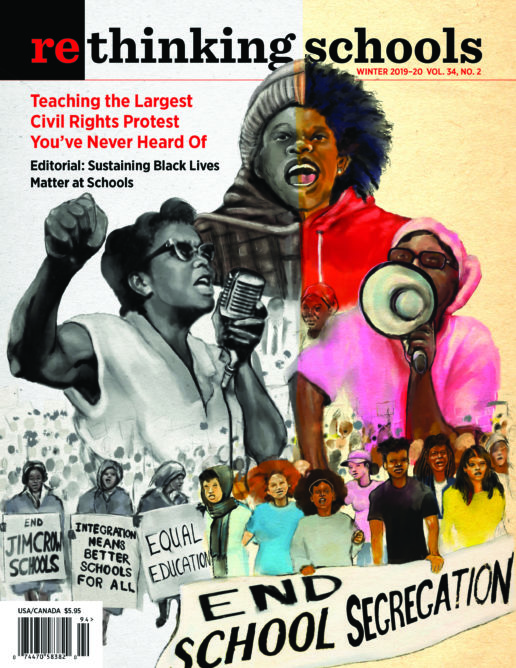Our picks for books, videos, websites, and other social justice resources 34.2
Curriculum
An Indigenous People’s History of the United States for Young People
By Roxanne Dunbar-Ortiz, adapted by Jean Mendoza and Debbie Reese
(Beacon Press, 2019)
272 pp.
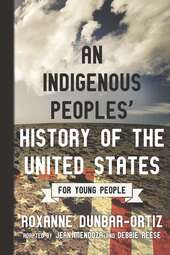
In this adaptation of Roxanne Dunbar-Ortiz’s influential book, curriculum developer Jean Mendoza and children’s literary critic Debbie Reese provide young people with a history of the Native people whose lands were colonized by Europeans and their descendants over the past 400 years. The authors lead readers from the Spanish conquest of Mexico to the Standing Rock protests of the Dakota Access Pipeline. An Indigenous People’s History represents a fundamental challenge to the countless U.S. history textbooks that celebrate “liberty,” “freedom,” and the “the rise of the American nation,” but fail to recognize the humanity — or often even the existence — of the Indigenous peoples who were here first, and are still here. How much more clearly can our students see the history of this country when we put Indigenous people’s lives at the center?
***
Teaching Issues
Words No Bars Can Hold: Literacy Learning in Prison
By Deborah Appleman
(W. W. Norton & Company, 2019)
163 pp.
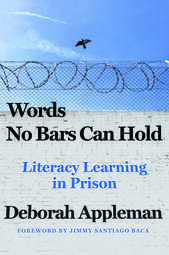
Deborah Appleman’s outstanding scholarship on literacy instruction spans decades. In this book, she writes about teaching college literature and writing courses in a high-security prison. But her revelations about the transformative power of education also speak to the necessity of changing teaching in our schools. As Appleman notes, “The incarcerated students reflected much of what we have learned in recent literacy research about the importance of providing literary texts that reflect the realities of the lives of the students. . . . [W]hen students see themselves reflected in the texts that are assigned, they are more likely to complete assignments and experience more academic success.”
Words No Bars Can Hold is filled with Appleman’s teaching stories, research, and reflections republished from her blog about her work, as well as the poetry and discussions of her incarcerated students like Zeke, who wrote, “Writing offered me a conduit to communicate my experiences with the world. It was not therapy, but it could speak for me in ways nothing else could. It also offered me some evidence that I was still a feeling and empathetic human being.”
Appleman’s book is important, not just for those who teach in prisons, but also for those who want to understand how to break the school-to-prison pipeline.
***
Website
Migrant Child Storytelling
Migrantchildstorytelling.org
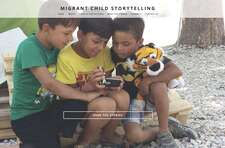
This website “is for any migrant child from any part of the world who has a story to tell.” But it is also for educators who want to hear these stories and share them with our students.
This is a children’s place. Without any adult interpretation, the website offers stories and drawings of how children experience the trauma of migration, like Yonas’ harrowing journey from Eritrea to Calais, France; smugglers told them, “If you don’t have money, we will take a kidney.” But there are also tender vignettes from daily life — Zeinab’s “happiest day” in a children’s park in Afghanistan; Alexis’ admiration for the “smart” rabbits in Belize. These stories remind us of children’s resourcefulness and resiliency, and can be hopeful as well as grim. No doubt, the website’s limitation is that it offers no broader social context about child migrants’ stories and drawings. But students can use these portraits to generate questions for further research, and the intimacy of the stories and images will give urgency to that research.
***
Climate Change Books
Greta’s Story: The Schoolgirl Who Went on Strike to Save the Planet
By Valentina Camerini
Available in English, Spanish, and Italian
(Simon and Schuster UK, 2019)
129 pp.
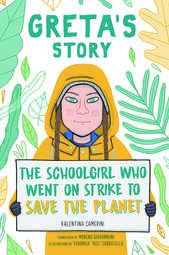
This thoughtful, unofficial biography gently tells the story of Greta Thunberg’s childhood in which she was diagnosed with Asperger’s syndrome, an illness that in some cases leads people to focus on just one thing. Greta focused on climate change — watching videos and reading everything she could find.
In time, Greta became so depressed that she didn’t talk, read, or hardly eat for two months. Her parents helped her deal with her depression while she challenged her parents to radically change their lifestyle — her mother was an international opera singer and Greta convinced her never to fly on airplanes again. The biography describes the first day she struck without her parents’ permission and continues through her speech at the World Economic Forum in Davos, Switzerland, and the March 15, 2019, international climate strike. It includes a glossary and timeline.
Try to find a way to buy a class set of this book and use it to not only teach about climate change, but also to discuss issues not often discussed in classrooms such as Asperger’s syndrome, depression, conflicts with one’s parents, and the role of individual initiative and mass action by youth.
***
Our House Is on Fire: Greta Thunberg’s Call to Save the Planet
Written and illustrated by Jeanette Winter
(Beach Lane Books, 2019)
36 pp.
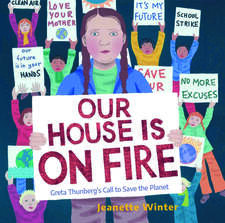
This award-winning 80-year-old author and illustrator of The Librarian of Basra: A True Story from Iraq, has created another powerful children’s picture book. With short sentences, multiple protest signs, and beautiful drawings, Winter tells the story of Greta and how she sparked a worldwide children’s march. The book concludes with Greta asking “CAN YOU HEAR US?” and “WHAT WILL YOU DO?” all in 216-point type.
***
The End of the Wild
By Nicole Helget
(Little Brown and Company, 2017)
260 pp.
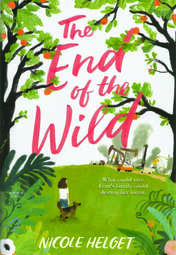
This is a plot-driven story about Fern, an 11-year-old girl upset with the possibility of a nearby forest being destroyed by a fracking operation. The book’s sensitive treatment of immigrants, poverty, foster children, and the death of a parent will hold children’s attention.
Fern, who ends up doing her school STEM project on fracking, feels conflicted between the damage caused by fracking and jobs it’s providing to her low-income community.
Although the book connects fracking with the destruction of nature around the fracking site, it does not connect it to the larger problems of global warming and earthquakes, poisoned water, and health problems, nor does Fern ever discover that people around the country are building social movements against fracking. Nonetheless, this book could be useful in a literature circle, whole class reads, or a read-aloud as the personalities of each of the child protagonists come alive as the conflict reaches its climax. With supplemental materials, the book could spark deeper discussion and learning about the dangers of fracking, conflicting points of view about the issue, and the growing global movement against fracking. (For teacher background on fracking, we recommend Amity and Prosperity: One Family and the Fracturing of America, by Eliza Griswold; and anything by biologist Sandra Steingraber.)
***
Picture Book
Missing Daddy
By Mariame Kaba, Illustrated by bria royal
(Haymarket, 2019)
32 pp.
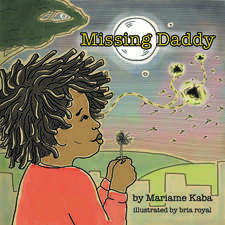
According to author Mariame Kaba, 2.7 million children under the age of 18 have an incarcerated parent. In an author’s note, Kaba says that she wrote Missing Daddy because of her frustration finding materials that can help children deal with the “loss, grief, and trauma” of having a parent incarcerated. The young narrator’s father went to prison when she was just 3. Sometimes her classmates can be cruel — “You know your daddy’s a criminal so that makes you one” — but she is surrounded by a loving family and an understanding teacher and counselor. This poignant book will help not only young children who find themselves in this circumstance, but will also sensitize classmates and educators themselves. Missing Daddy is a warm and necessary book.

